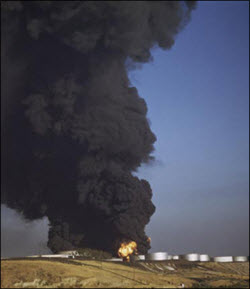
As the federal government seeks to make improvements in the safety and security of chemical facilities, an oil and gas employer has been cited by OSHA following the deaths of two employees. What happened in this case and how can future incidents be avoided?
OSHA cited and fined a Geismar, Louisiana, petrochemical plant for six process safety management violations, including one classified as willful. The investigation was prompted by a June explosion that killed two workers and injured 80 people. Penalties totaled $99,000.
The company says it is reviewing the OSHA citations and pursuing an internal investigation. According to the employer, the last lost-time accident at the location was in 2009. But OSHA inspectors said the company violated safety and health standards, which, when followed, can protect workers from hazardous chemicals.
The Baton Rouge area director underscored the seriousness of the citations levied against the oil and gas company, noting, “It is the employer’s responsibility to find and fix workplace safety violations and to ensure the safety of its workers. Failing to do so cost two workers their lives.”
Why is the White House involved?
OSHA is not alone in its efforts to prevent these types of accidents. Last summer, President Obama issued an Executive Order to improve chemical facility safety and security.
Citing “past and recent tragedies,” the Executive Order addressed the significant risks of handling and storing chemicals. While the federal government, including OSHA, has developed programs to reduce the risks associated with hazardous chemicals, the president said additional measures should be taken by regulating agencies.
The Executive Order established a working group with leaders from the Department of Labor, Environmental Protection Agency, and the Department of Homeland Security. They and others are working to develop a unified federal approach to risks in chemical facilities and are seeking improvements in incident reporting, response, and enforcement. Another priority is to improve the sharing of information about chemical facilities that may not have complied with federal safety requirements.
The basics of process safety management
OSHA’s process safety management (PSM) standards (29 CFR 1910.119) are designed to prevent unexpected releases of hazardous chemicals. Facilities that use processes involving chemicals considered “highly hazardous” at or above quantities specified in Appendix A of 29 CFR 1910.119, or flammable liquids or gas of 10,000 pounds or more, must comply with the PSM standard.
Typical industries covered under the PSM standard include chemical production, certain manufacturing industries, and fabricated metal products. Retail facilities, oil and gas well drilling or servicing operations, and facilities that are normally unoccupied and remote are exempt; they do not need to comply with the standard even if they meet the chemical threshold criteria.
While each company’s method of achieving compliance will depend on the specific chemicals in use, the characteristics of the facility, and other individual factors, some basic steps that all employers covered under the PSM standard must follow include the following:
- Compile detailed information about the chemicals, technology, and equipment used in PSM-covered processes.
- For each PSM-covered process, conduct a detailed process hazard analysis (PHA). PHAs must be updated and revalidated at least every 5 years.
- Develop a written plan for involving employees in the management of PSM-regulated processes, including clear written instructions for safely conducting all PSM-related activities.
- Inspect and test process equipment regularly.
- Conduct a full compliance audit at least every 3 years.
- Develop a written emergency action plan.
- Investigate any incident that results in, or could have reasonably resulted in, catastrophic releases of highly hazardous chemicals within 48 hours of the incident’s occurrence.
- Train employees involved in PSM-regulated processes on an overview of the process, safe operating procedures, the specific safety and health hazards involved, emergency operations, and safe work practices. Refresher training is required at least every 3 years and whenever there are changes to the process.